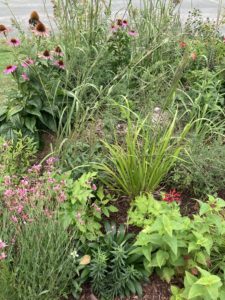Designing A Native Plant Garden
Some people will avoid planting a native wild garden for fear that it will eventually become a mass of unsightly weeds. There are a few design ideas that can help prevent that and help you to create an attractive garden of native plants.
- When you are planning your native plant garden, the first thing is to rid the area of the existing weeds with as little disturbance of the soil as possible. Do that by cutting, pulling or smothering the weeds.
- If you are getting weeds in your native plant garden, the first response should be to plant more plants! Weeds grow when there is bare soil, where the light will reach. The solution is to cover any bare soil with a plant that you want so as you pull a weed from your native garden, replace it with a desirable plant.
- Choose the right plant for the right place. There is no such thing as bad soil, you just have to find the right plant. So, if you have sun and sandy soil, choose plants that like sun and sandy soil. They will thrive and weeds are less likely to compete.
- Mow your wild garden in the spring after temperatures have reached 10 degrees for at least a week. This allows the hibernating insects to emerge. Leave the cuttings as mulch. Bulbs will emerge first. Followed in June, July and August with flowering perennials. You will need to do your research in order to choose plants that flower throughout the summer.
- Keep the plant scheme simple, choose a few plants that you have researched and like and plant them in a pattern. One analogy that works for me is to think of your garden in terms of a number of “quilt blocks”. Design one block and repeat it in your native garden over and over. This creates a pleasing and simple planting design.
- Plan a strip edge of lawn along the front of your native bed. This implies intentionality and keep the native plants in bounds.
- It is OK to edit. For example, if you have planted golden rod (it can tend to spread but it pulls out easily), it is OK to go in and pull some of it out. You are the gardener and although you have committed to growing a native garden, it is OK to edit.
These design ideas were taken from a presentation by Ben Futa, owner of Botany, a garden shop located in South Bend, Indiana.
authored by Carol Anderson


